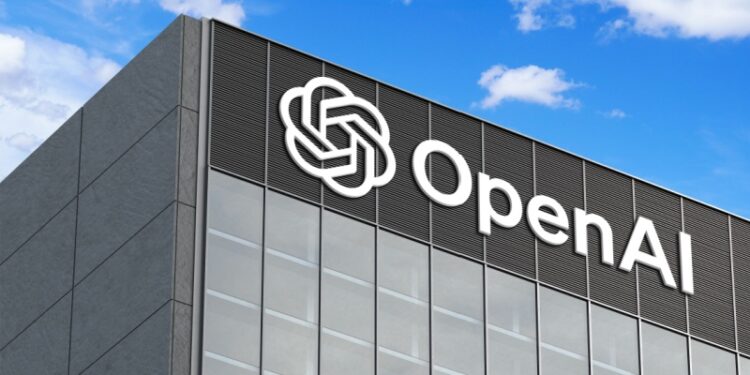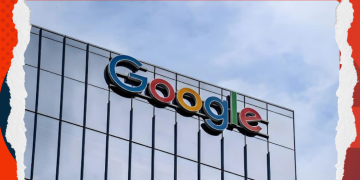OpenAI has been secretly developing a comprehensive productivity platform that could directly compete with Google Workspace and Microsoft Office, according to recent reports. The AI company is integrating document collaboration, real-time chat, and meeting transcription features into ChatGPT, transforming it from a simple chatbot into a full workplace productivity suite.
This signifies a significant shift in OpenAI’s strategy and puts the company on a collision course with its biggest investor, Microsoft, which owns roughly 49% of OpenAI’s for-profit division. The development also signals OpenAI’s intention to capture a larger share of the lucrative enterprise software market, currently dominated by Microsoft and Google.
Behind the Scenes Development
The Information first reported that OpenAI has been quietly working on these features for months, with development accelerating after the successful launch of Canvas in October 2024. Canvas, which allows users to draft and edit documents alongside AI assistance, served as a testing ground for more advanced collaboration tools.
The new productivity features reportedly include:
- Document collaboration similar to Google Docs, allowing multiple users to edit files simultaneously
- Real-time chat functionality for team communication within the platform
- Meeting transcription and recording with AI-powered summaries and action items
- File sharing and storage capabilities integrated directly into ChatGPT
- Advanced export options including PDF, DOCX, and markdown formats
Since early June, OpenAI has been steadily rolling out office-focused features to ChatGPT users. The company launched Record Mode for meeting transcription, enhanced its Projects feature with better file handling, and introduced Connectors that pull data from Microsoft Outlook, Teams, Google Drive, Gmail, and other popular business tools.
The Microsoft Tension
This development creates an awkward situation for OpenAI and Microsoft, whose partnership has been crucial to both companies’ AI strategies. Microsoft has invested over $13 billion in OpenAI since 2019 and integrated OpenAI’s technology into its own products, including Bing search and Microsoft Copilot.
However, the relationship has grown increasingly strained as both companies compete in overlapping markets. Microsoft CEO Satya Nadella has expressed skepticism about OpenAI’s aggressive timeline for achieving artificial general intelligence, while OpenAI executives have reportedly discussed accusing Microsoft of anticompetitive behavior.
The productivity suite puts OpenAI in direct competition with Microsoft Office and Copilot, products that ironically use OpenAI’s own technology. Industry analysts suggest this could force a restructuring of the partnership agreement, which is already under discussion according to Reuters reports.
Market Implications
Google and Microsoft dominate the productivity software market, with Google Workspace claiming over 3 billion users and Microsoft Office holding approximately 1.2 billion users worldwide. Both companies have been integrating AI capabilities into their platforms, with Google’s Gemini AI in Workspace and Microsoft’s Copilot in Office 365.
OpenAI’s entry into this space comes with several potential advantages. The company’s ChatGPT already has over 100 million weekly active users, providing a massive existing user base. More importantly, OpenAI’s productivity tools would be built from the ground up around AI interaction, rather than retrofitting AI into existing document-centric workflows.
“AI is introducing an intelligence-centric workflow that makes many of those documents obsolete,” Leury Pichardo, director of marketing at Digital Ceuticals, told PYMNTS. “We get the answer without ever needing to create the report. The paradigm is shifting from using a tool to do work to prompting an intelligence to deliver the result.”
This represents a fundamental shift from traditional productivity software, where users manually create spreadsheets, presentations, and reports. OpenAI’s approach could make many of these document-creation tasks unnecessary by providing direct AI-generated insights and analysis.
Enterprise Growth Strategy
OpenAI has been aggressively expanding its enterprise offerings, with ChatGPT Enterprise and ChatGPT Team gaining significant traction. The company added 1 million paying business subscribers since February 2025, bringing its total to 3 million business users.
The productivity suite fits into OpenAI’s ambitious revenue targets. The company aims to generate $15 billion from business subscriptions by 2030, up from approximately $600 million in 2024. This represents a 25-fold increase in just six years, highlighting the company’s confidence in its enterprise strategy.
Colin Cooper, who runs a business consultancy, noted that OpenAI is positioning itself as a threat to productivity apps that rely on manual workflows. “ChatGPT isn’t just automating tasks; it’s orchestrating them, end-to-end, with context and language-level intelligence,” he explained.
Technical Challenges and Skepticism
Despite the ambitious plans, OpenAI faces significant technical and practical challenges. Critics point to ongoing issues with AI accuracy, commonly known as “hallucinations,” where AI systems generate incorrect information that sounds plausible.
“ChatGPT is a language model, and whatever it produces only sounds good, but there is no guarantee that any output will be correct,” said Vaclav Vincalek, Chief Technology Officer at Hiswai. “In instances where errors can cause millions of dollars of losses or lawsuits, the adoption will be much slower.”
Privacy and data security concerns also loom large. Enterprise customers remain wary of connecting sensitive business data to AI systems, particularly given OpenAI’s history of data handling controversies.
Nicholas Fok, managing partner of Erez Capital, remains skeptical about ChatGPT’s ability to replace established productivity tools. “ChatGPT remains far from being a true challenger to Microsoft Office,” he said, noting that the AI chatbot still struggles with tasks like creating professional slide presentations compared to PowerPoint.
OpenAI Enters a Crowded Productivity Race
The productivity software market is notoriously difficult to disrupt. Google has struggled to gain significant market share from Microsoft Office despite offering competitive features and pricing. The challenge for OpenAI will be convincing organizations to abandon well-established workflows and migrate to an entirely new platform.
However, OpenAI may have an advantage in timing. The rise of remote work and digital collaboration has made businesses more open to new productivity solutions. Additionally, the company’s AI-first approach could appeal to organizations looking to modernize their workflows rather than simply digitize existing processes.
The competition is also intensifying from other directions. Companies like Zoom have added AI-powered productivity features, while startups like Beautiful.ai are reimagining presentation creation using AI. The entire productivity software landscape is being reshaped by artificial intelligence.
Industry Response
Microsoft and Google have not officially responded to OpenAI’s productivity suite plans, but both companies are likely preparing competitive responses. Microsoft has already been positioning Copilot as the main interface for creating documents, spreadsheets, and presentations across Office 365.
Google has integrated its Gemini AI capabilities throughout Workspace, though it hasn’t captured significant market share from Microsoft’s dominance. The addition of a well-funded, AI-native competitor could force both companies to accelerate their own AI integration efforts.
The development also highlights the broader trend of AI companies expanding beyond their original niches. Just as OpenAI has moved from research to consumer applications to enterprise software, other AI companies are likely to follow similar expansion strategies.
Looking Ahead
OpenAI has not officially announced a launch date for its productivity suite, and the company has not confirmed the existence of these features. However, the steady rollout of office-focused capabilities suggests a systematic approach to building a comprehensive productivity platform.
The success of this initiative could determine whether OpenAI becomes a lasting force in enterprise software or remains primarily a consumer AI company. It also represents a crucial test of whether AI-native productivity tools can disrupt established players in one of the most entrenched software markets.
For businesses, the development signals an important shift in how work gets done. Rather than using AI to enhance existing document-centric workflows, the future may involve AI-mediated interactions that eliminate the need for many traditional productivity tasks altogether.
The stakes are enormous. The global productivity software market is worth hundreds of billions of dollars, and success in this space could establish OpenAI as a permanent fixture in enterprise technology. However, the company faces significant technical, competitive, and strategic challenges that will test its ability to execute on this ambitious vision.
As the AI productivity race heats up, one thing is clear: the traditional office suite is about to face its biggest disruption since the shift from desktop to cloud-based applications. Whether OpenAI can successfully challenge the Microsoft-Google duopoly remains to be seen, but the attempt alone is reshaping the entire industry.











